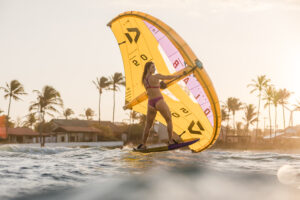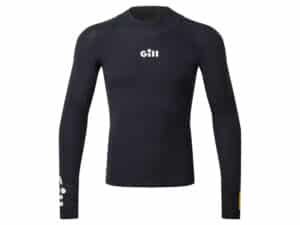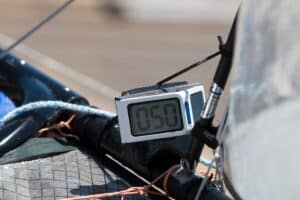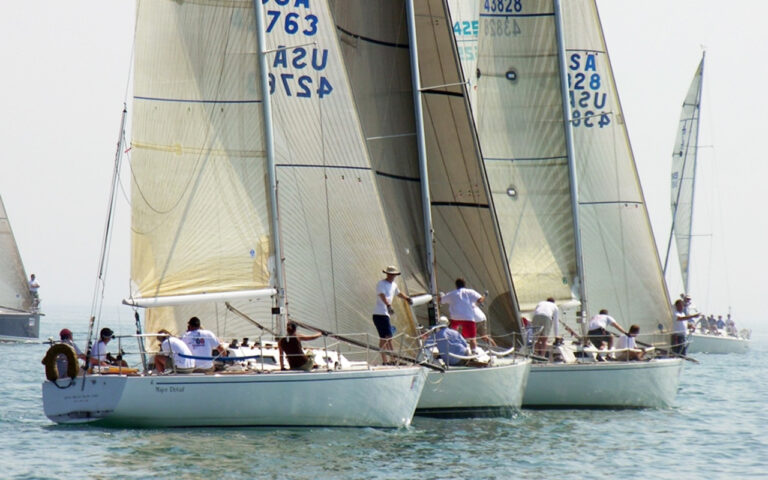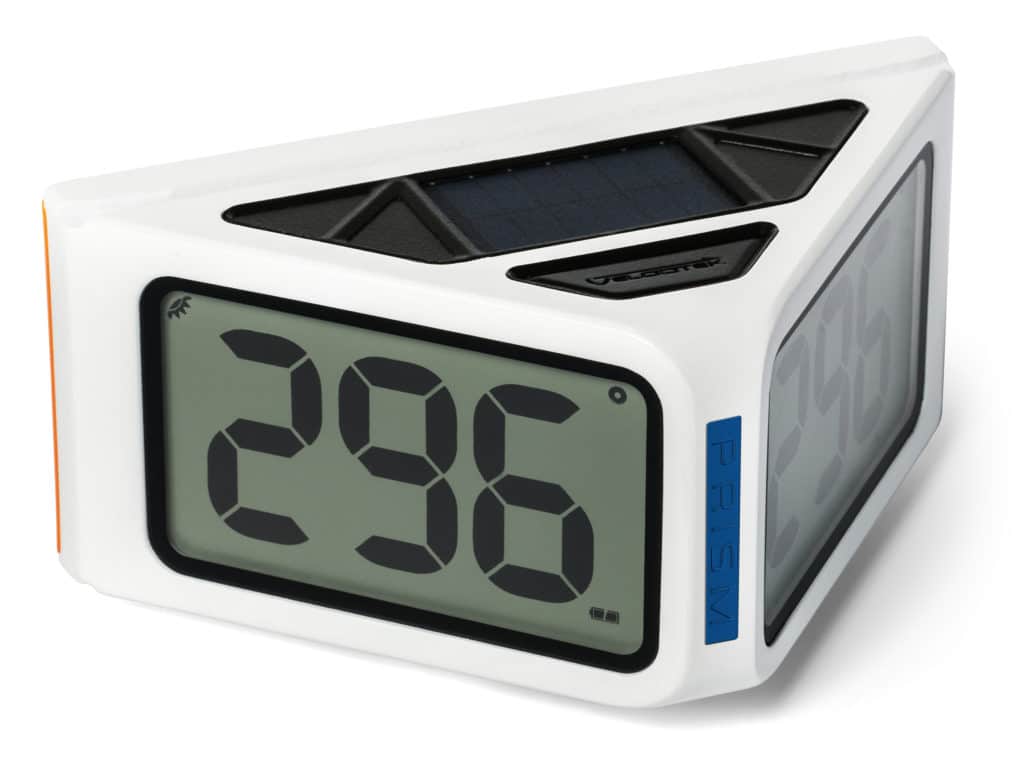
Have you ever gone from compass mode to starting mode and then wanted to go back to compass mode to do a final wind check but hesitated for fear of messing up the countdown timer? Do I press the left button once or twice to get there? Or is it the right button I’m supposed to press? Where’s the manual?
Sometimes I just want a basic compass and nothing else—a device that won’t require me to toggle through a host of options (or even provide that temptation). So when I got a chance to try Velocitek’s single-purpose Prism compass for the summer, I was eager to find out whether indeed, back to basics would improve my starting routine.
When Velocitek came out with its stripped-down, single-purpose Prism compass in early 2018, skeptics looked at it as an aberration. After all, when it comes to electronic devices, isn’t the mantra the more features the better? Maybe not for everyone.
The first thing I noticed was how lightweight it was, weighing in at 4.8 ounces, making it the lightest digital compass on the market. I pressed the on button, and up pop the biggest digits I’ve seen on this size compass—29.8 mm high (just over an inch high). I’ve since used it on an Etchells and an RS Aero, and I suspect most of the boats around me could read it just as well as I could. Mast-mounted on a larger sportboat, the number can be easily read from the helm. It would certainly be no problem reading it from a trapeze wire. I also found the compass display easy to read, regardless of bright daylight or polarized sunglasses. According to Charles Swanson, from Velocitek, this visibility is a function of the materials used in the lenses. “The Prism has a pair of cut acrylic lenses, which are then over-molded into the outer white housing. Some lenses are a polycarbonate front housing, which is one of the most durable plastics out there, but can produce a kind of oily or rainbow pattern, which might be especially evident when viewed with polarized sunglasses.”
Been there, done that.
The compass has a fast response rate to course changes, updating about four times per second, which means it’s always on point. For heading reference, it uses only magnetic input.
But why no additional features, maybe even a timer?
“When we talked to Olympic and other high-level sailors and asked them what they were looking for, nobody really said a timer,” says Swanson. “To take a sophisticated device and use it as a countdown timer didn’t make sense. Etchells and 470 teams are all mounting watches below their compasses, anyway. We wanted to make the easiest electronic compass to use.”
The Prism isn’t inexpensive, but, according to Swanson, that’s because of the use of costly plastics, sensors, solar panels and batteries. Plus, he says, it has twice as many LCDs as similar-sized compasses. If you’re looking for a top-level single-purpose electronic compass, with numbers that are easy to read in all conditions, and no risk of losing what’s on the screen due to operator error, the Prism deserves serious consideration. It may prove well worth the $500.

